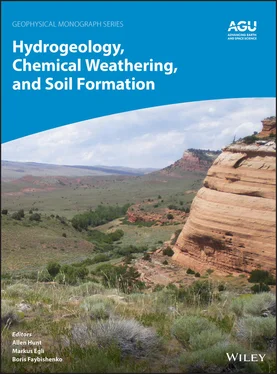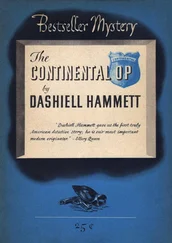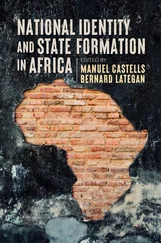Philip BrunnerCenter for Hydrogeology and Geothermics, CHYN, University of Neuchâtel, Neuchâtel, Switzerland
Géraldine BullingerInstitute of Construction and Environmental Technology, Haute école d’ingénierie et d’architecture, Fribourg, Switzerland
Steven G. DrieseDepartment of Geosciences, Baylor University, Waco, Texas, USA
Markus EgliDepartment of Geography, University of Zürich, Zürich, Switzerland
Boris FaybishenkoEarth and Environmental Sciences Area, E. O. Lawrence Berkeley Laboratory, Berkeley, California, USA
Peter A. FinkeDepartment of Soil Management, Ghent University, Ghent, Belgium
Maryam ForoughiWarnell School of Forestry and Natural Resources, University of Georgia, Athens, Georgia, USA
Michael N. GooseffHydrology, Water Resources and Environmental Fluid Mechanics, Environmental Engineering, University of Colorado, Boulder, Colorado, USA
Claire GuenatLaboratory of Ecological Systems, ECOS & WSL, Ecole Polytechnique Fédérale, Lausanne, Switzerland
Noah HoffmanINSTAAR and Dept. of Geography, University of Colorado, Boulder, Colorado, USA
Rainer HornInstitute for Plant Nutrition and Soil Science, Christian Albrechts University, Kiel, Germany
Richard J. HuggettSchool of Environment, Education, and Development, University of Manchester, Manchester, UK
Allen HuntDepartment of Physics and Department of Earth & Environmental Sciences, Wright State University, Dayton, Ohio, USA
Patrick J. KellyINSTAAR and Dept. of Geography, University of Colorado, Boulder, Colorado, USA
Rattan LalCarbon Management and Sequestration Center, The Ohio State University, Columbus, Ohio, USA
Deborah L. LeslieDepartment of Earth Sciences, University of Memphis, Memphis, Tennessee, USA
Claire E. LukensDepartment of Life and Environmental Sciences, University of California, Merced, California, USA
W. Berry LyonsSchool of Earth Sciences and Byrd Polar & Climate Research Center, The Ohio State University, Columbus, Ohio, USA
Daniel MarkewitzWarnell School of Forestry and Natural Resources, University of Georgia, Athens, Georgia, USA
Aldo MirabellaPiazza S. Nicolò 23, 95036 Randazzo, Italy
Lee C. NordtDepartment of Geosciences, Baylor University, Waco, Texas, USA
Kevin P. NortonTe Herenga Waka/Victoria University of Wellington, Wellington, New Zealand
William OuimetDepartment of Geography and Center for Integrative Geosciences, University of Connecticut, Storrs, Connecticut, USA
Todd C. RasmussenWarnell School of Forestry and Natural Resources, University of Georgia, Athens, Georgia, USA
Peter B. SakDepartment of Earth Sciences, Dickinson College, Carlisle, PA, USA Earth and Environmental Systems Institute and Dept. of Geosciences, Pennsylvania State University, University Park, PA, USA
Rodolphe SchlaepferLaboratory of Ecological Systems, ECOS & WSL, Ecole Polytechnique Fédérale, Lausanne, Switzerland
Andreas SchomburgLaboratory of Functional Ecology, Institute of Biology, University of Neuchâtel, Neuchâtel, Switzerland
Gary E. StinchcombWatershed Studies Institute & Department of Earth and Environmental Sciences, Murray State University, Murray, Kentucky, USA
Arnaud J.A.M. TemmeDepartment of Geography and Geospatial Sciences, Kansas State University, Manhattan, Kansas, USA
Pascal TurbergLaboratory of Ecological Systems, ECOS & WSL, Ecole Polytechnique Fédérale, Lausanne, Switzerland
Ann VerdoodtDepartment of Soil Management, Ghent University, Ghent, Belgium
Qiuzhen YinEarth and Life Institute, Georges Lemaitre Center for Earth and Climate Research, Université Catholique de Louvain, Louvain‐la‐Neuve, Belgium
Yanyan YuInstitute of Geology and Geophysics, Chinese Academy of Sciences, Beijing, China
The soil is a nexus for water, chemicals, and biologically coupled nutrient cycling; it is an upper bound of the sediment and rock cycle and constitutes a lower bound for water and carbon recycling through the atmosphere. Our choice of title, “Hydrogeology, Chemical Weathering, and Soil Formation,” emphasizes the linkage of the topics of soil formation and chemical weathering through water cycling. Of course, biological processes are a foundation of all three of these topics and work on many levels, from nitrogen fixation and soil zonation through bioturbation to large‐scale ecology. The importance of the chemical weathering of silicate minerals to soil formation, the composition of the atmosphere and Earth’s biological history, has been studied for more than a century (e.g. Darwin, 1881; Dokuchaev, 1883) and extensively reviewed (e.g. Berner, 1992).
According to the Urey reaction, taken to represent a general model of the carbonate‐silicate cycle and weathering of silicate minerals, calcium silicate (wollastonite) is converted to calcium carbonate, while simultaneously gaseous CO 2is replaced by solid SiO 2. Thus is atmospheric carbon dioxide sequestered in the reservoir of carbonate rocks. Removal of large quantities of atmospheric CO 2by this reaction is the basis of its relevance to climate change and the history of Earth’s atmosphere, as well as to the evolution of life ( chapter 2of this volume). In other words, without silicate weathering, the Earth would likely have become a runaway greenhouse with an unhabitable climate (Frings & Buss, 2019). No long‐term effect on atmospheric CO 2results from subsequent weathering of carbonate rocks, which merely triggers renewed sequestration of the same quantity of carbon, even though a short‐term CO 2drawdown may result from an increase in carbonate weathering rates.
The silicate weathering reaction is effective only in the presence of water. While the role of water in kinetics is clarified in the expression for the reaction of plagioclase, its typically even more important role in the actual rate of weathering near the Earth’s surface is still largely hidden from view. The rate at which chemical weathering of silicate minerals actually occurs is proportional to the flux of water through Earth’s surface, meaning that the reaction rate of minerals such as plagioclase is often limited not by its reaction kinetics but by transport of either the reacting species into, or reaction products out of, the chemical weathering zone (Blättler & Higgins, 2017; Maher, 2010). Thus, the reaction rate is proportional to the water throughflow within the Earth’s skin (i.e. the soil or regolith), and quantification of the partitioning of the water at the interface between the terrestrial surface and the atmosphere becomes key to understanding the rates of weathering around the world. Chemical weathering and soil formation intersect in this way the cycles of water and of carbon at the terrestrial surface.
The release of P as well as ions such as K +and Ca 2+(or likewise Mg 2+and related species) turns out to be critical for soil formation, as such mineral nutrients are essential for the functions of vascular plants, whose respiration, for example, provides a significant part of the CO 2required to continue the silicate weathering. The process by which plants are established and form communities with microorganisms, leading to the development of soil, is quite complex and is the subject of a great deal of research. In any case, more mature soils are differentiated in depth, with plant roots, litter, and other organic material near the surface, a primarily mineral layer rich in carbon (the A horizon) just below, and a weathered layer with much lower organic content (the B horizon) below that. The rate at which these layers form and differentiate, together with the processes by which they form, is important in a range of human activities as well as geologic processes too wide to list here. The rate at which predominantly the A horizon is lost to erosion is important in agriculture, water quality, river management, and geomorphology, as well as other areas. Most important for the present volume is that the process of chemical weathering appears to be water flow‐rate limited overall. Yet the history of the study of soil formation, tracing back to Darwin and to Dokuchaev in the 19th century, has left an imprint on the study of soils, even while modern understanding places the single process of chemical weathering at the center of examination. While Dokuchaev emphasized the soil formation factors, which can be related to silicate weathering, Darwin’s emphasis was rather on bioturbation. A contrasting approach to soil is discussed by Huggett in the introductory chapter. Here, rather than focusing on rate‐limiting processes or controlling reactions, a unifying picture of a collection of mutually interacting constituents is presented.
Читать дальше












